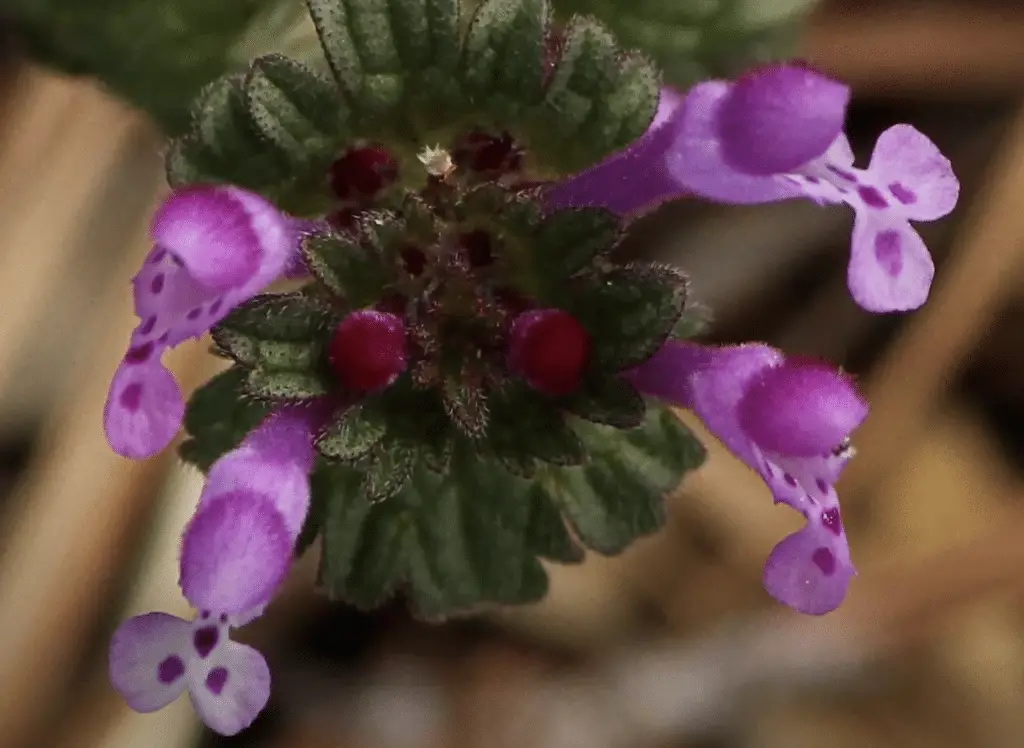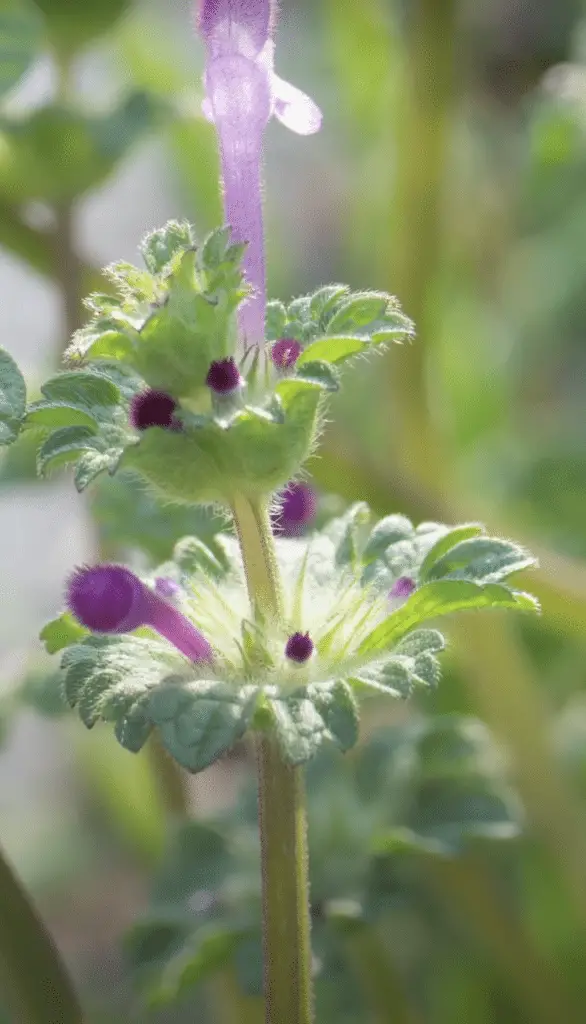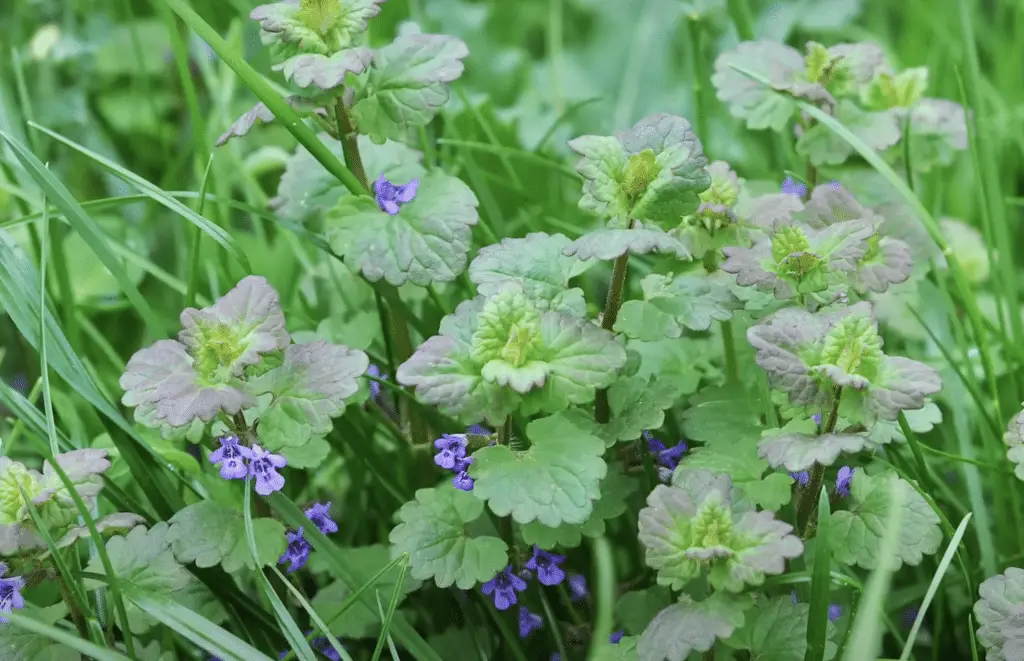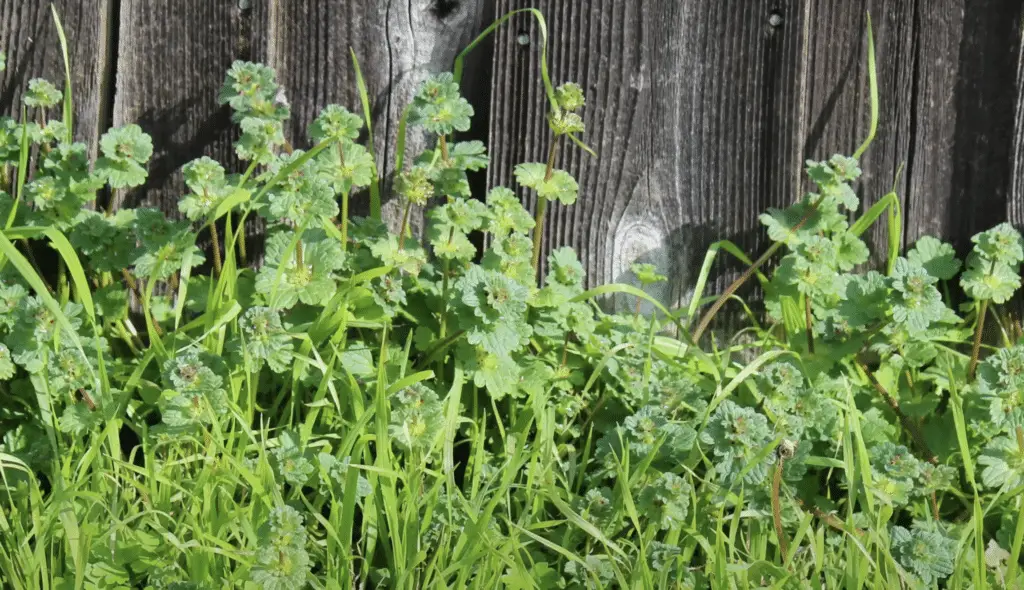LAWN PHIX PRO TIPS
- Henbit is a winter annual lawn weed
- You’ll see these weeds germinating in thinner areas during the fall
- Henbit ID:
- Dark purple stalks
- Square-shared leaves, dark green in color
- Pink-to-purple flowers in the spring.
- It is easily controlled in the early spring with a broadleaf weed herbicide (we like End Run by Helena).
- An additional application in the fall is optional.
- Continue best cultural practices to help prevent Henbit.
- Grow a thick and healthy lawn.
- Mow frequently.
The purple-colored flowers might look pretty when they bloom, but the henbit weed is nothing that you want in your lawn, garden, or landscaping. Henbit grows in areas that are constantly moist, and each weed can produce thousands of seeds that can spread throughout the lawn in subsequent months and years.
In this post, we’ll cover how to kill and control henbit in your lawn. Here’s a closer look:
Table of Contents
Henbit Identification
Henbit plants are considered a winter annual weed. This is because henbit seeds sprout in the late fall or early winter. Then, in the early warm weather months or early spring, after the henbit seeds sprout in the fall, they work to take over warm season lawns.
Henbit plants are known for their purple flowers, fibrous root system and dense growth as they fill in thin lawns. Aside from the reddish purple henbit flowers, the common annual weed is also known for its square stems and heart shaped leaves and its preference for growing in shady spots and moist soil in your grass or yard. Not to be confused with purple deadnettle, they’re often found actively growing under trees and other plants.
If the henbit plant is not treated promptly, it can quickly spread throughout your lawn and yard. That’s because each plant produces up to 2,000 weed seeds – and these henbit seedlings can spread quickly throughout a lawn, creating a sort of ground ivy type cover.
You don’t want to encourage dense growth of henbit, and in the next sections we’ll talk about how to kill henbit weeds and prevent them from overtaking your lawn or yard altogether.




How To Eliminate Henbit
Like we said above, you don’t want to encourage dense growth and the spread of this weed, so it’s important to kill henbit before it can take over. Killing henbit also prevents henbit seedlings from spreading and future weed growth from occurring. Here’s how to kill henbit weeds:
Use broadleaf weed killers or a post-emergent herbicide
This is one of the most effective ways to kill henbit and other broadleaf weeds. Just be sure that you follow all the label directions on the product you’re using so you don’t harm grass or any other plants. Broadleaf weed killers and herbicides will kill more than just henbit, but many broadleaf weeds when used correctly. Repeated applications may be necessary for some treated areas. We like Endrun and TZone.
Remove it by hand
Though this can be time-consuming, it’s effective for smaller amounts of the particular weed. You just want to make sure you remove all of the plants from the lawn or soil. That means the upper leaves with rounded teeth, lower petals, and roots. Rather than spot treatments, hand pulling can do the trick.
How To Prevent & Control Henbit
The best means of effective control of henbit is to prevent it from growing altogether. Here’s a look at some means you can administer to prevent henbit:
Grow a thick lawn
A healthy lawn is a good defense against henbit and many broadleaf weeds. Practice feeding your grass regularly with fertilizer and pre-emergent herbicides to ensure your lawn flourishes and any weeds flounder before they have a chance to grow.
Also, be sure to mow your lawn at the right height to allow the grass to flourish.
Put down a pre-emergent herbicide in the early fall
Henbit is a winter weed, so treating your lawn in early fall can help prevent henbit seeds from spreading and growing.
Henbit Weeds FAQs
Will henbit weeds kill grass?
If it’s left to spread, it can form a dense cover on your lawn and smother parts of your grass. It’s why it’s important to take action if you notice any henbit growing in your lawn or yard.
Henbit vs. creeping charlie – what’s the difference between these broad leaved plants?
The main difference between the two is that henbit is a winter weed, while creeping charlie is a perennial. These two weeds do have some similarities. Both grow very quickly and can choke out grass in lawns. They should both be treated at the first sign of them.

